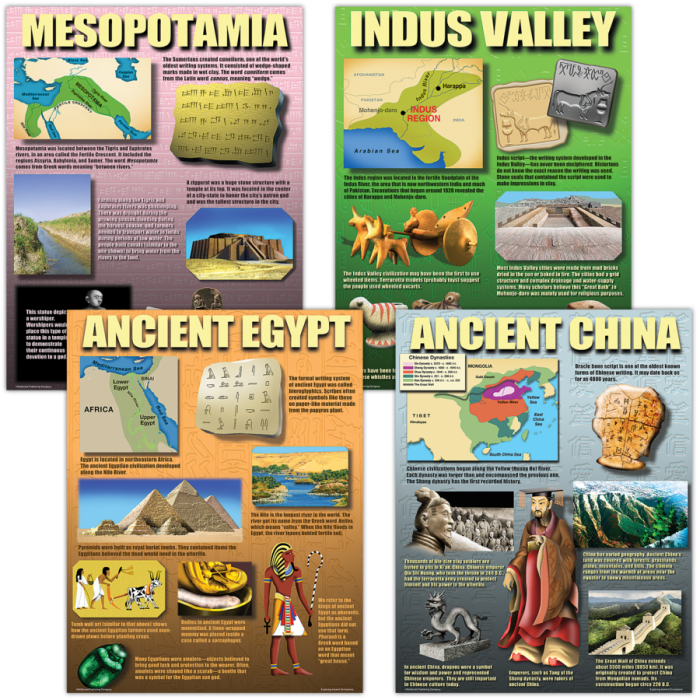
Food Trails for Vegetarians and Vegans: Embark on a culinary journey designed for plant-based palates. This exploration delves into the exciting world of vegetarian and vegan food trails, highlighting the unique logistical considerations, diverse geographic locations, and the potential for high-end travel experiences. We’ll examine the differences between vegetarian and vegan diets and how these distinctions shape the design of these specialized food trails, showcasing examples from various global cuisines.
Prepare to discover a world of delicious possibilities.
From vibrant markets overflowing with fresh produce to Michelin-starred restaurants offering innovative plant-based menus, we will explore the cultural significance of vegetarian and vegan cuisine across different regions. This guide provides practical advice on planning your own adventure, including tips for booking, managing allergies, and enhancing your experience with complementary activities such as cooking classes and farm visits. We will also discuss how to elevate these experiences into luxury travel packages, complete with private chef services and exclusive accommodations.
Defining Vegetarian and Vegan Food Trails
Vegetarian and vegan food trails offer exciting culinary journeys for those with specific dietary needs and preferences. These trails differ significantly in their design and focus, reflecting the core distinctions between vegetarian and vegan diets. Understanding these differences is crucial for crafting successful and inclusive food experiences.Vegetarian and vegan diets represent distinct approaches to plant-based eating. Vegetarianism encompasses a wide range of practices, generally excluding meat, poultry, and seafood.
However, many vegetarians consume dairy products, eggs, and honey. Veganism, on the other hand, is a more restrictive diet, eliminating all animal products, including dairy, eggs, honey, and any other animal-derived ingredients like gelatin or certain types of processed foods. This fundamental difference significantly impacts the planning and execution of food trails designed to cater to both groups.
Dietary Differences and Food Trail Design
The key difference between vegetarian and vegan diets lies in the inclusion or exclusion of animal-derived products. This impacts food trail design in several ways. For example, a vegetarian trail might feature a cheese tasting at a local creamery, while a vegan trail would focus on plant-based alternatives like cashew cheese or tofu-based spreads. Similarly, a vegetarian trail might include a restaurant known for its omelets, while a vegan trail would showcase restaurants specializing in creative plant-based dishes that mimic traditional egg dishes or simply omit eggs altogether.
Logistically, creating a food trail that accommodates both requires careful menu research, communication with vendors, and a clear labeling system to prevent accidental consumption of non-vegan items by vegan participants.
Examples of Vegetarian and Vegan Dishes
Many cuisines offer naturally vegetarian or easily adaptable vegan options. Italian cuisine, for instance, provides a wealth of vegetarian choices such as pasta dishes with vegetables and pesto, risotto, and pizzas with various vegetable toppings. These dishes can be easily adapted for vegan consumption by using plant-based cheese alternatives and avoiding eggs in the dough or sauces. Indian cuisine also offers numerous vegetarian options, including lentil-based curries (dal), vegetable biryanis, and numerous vegetable-centric dishes that are easily made vegan with the omission of ghee or dairy-based ingredients.
Mexican cuisine, with its abundance of beans, vegetables, and rice, presents another readily vegetarian and vegan-adaptable option; dishes like bean burritos, vegetable fajitas, and various salsas are naturally vegan or can be easily adapted. Thai cuisine, with its vibrant vegetable curries and noodle dishes, is also a good source of both vegetarian and vegan-friendly meals.
Logistical Considerations for Inclusive Food Trails
Creating food trails that cater to both vegetarians and vegans necessitates meticulous planning. Thorough research into each restaurant’s menu is crucial, ensuring that both vegetarian and vegan options are clearly identified. Direct communication with restaurants is essential to confirm the availability of vegan options and to address any potential cross-contamination concerns. Clear labeling on menus and trail maps is also important, differentiating vegetarian and vegan choices.
A detailed itinerary with alternative options for each stop can accommodate unexpected menu changes or unavailability of advertised items. Providing participants with a pre-trail document detailing all options at each stop is vital for transparency and to manage dietary expectations. Finally, offering a clear contact point for any questions or concerns before and during the food trail helps to ensure a smooth and enjoyable experience for everyone.
Geographic Locations for Vegetarian and Vegan Food Trails: Food Trails For Vegetarians And Vegans

Developing successful vegetarian and vegan food trails requires careful consideration of geographic location. The ideal location boasts a vibrant culinary scene with readily available plant-based options, diverse produce, and a cultural appreciation for vegetarian or vegan cuisine. Three diverse locations, each offering a unique culinary experience, are examined below.
Several factors contribute to the suitability of a location for a vegetarian and vegan food trail. These include the density of restaurants offering plant-based options, the availability and variety of fresh produce, and the cultural significance of vegetarian or vegan cuisine within the local community. A strong emphasis on locally sourced ingredients and sustainable practices further enhances the appeal of such a trail.
Suitable Geographic Locations and Culinary Features, Food trails for vegetarians and vegans
Three diverse geographic locations, each offering unique culinary experiences for vegetarian and vegan food trails, are: Southeast Asia (specifically Thailand and Vietnam), India, and California, USA.
| Location | Restaurant Density | Produce Availability | Unique Culinary Features |
|---|---|---|---|
| Southeast Asia (Thailand & Vietnam) | High; numerous restaurants offer vegetarian and vegan options, often clearly marked on menus. Street food often includes many naturally vegetarian choices. | Abundant and diverse; tropical fruits, vegetables, herbs, and spices are readily available. | Rich use of fresh herbs, spices, and coconut milk in curries, noodle dishes, and stir-fries. Many Buddhist traditions contribute to a long history of vegetarian cuisine. Dishes often feature tofu, tempeh, and other plant-based proteins. |
| India | High; vegetarianism is deeply ingrained in Indian culture, resulting in a vast array of vegetarian restaurants and dishes. Many restaurants cater specifically to vegan diets. | High; India is a major producer of a wide variety of fruits, vegetables, legumes, and grains. | Diverse regional cuisines feature lentils, legumes, vegetables, and spices in complex and flavorful dishes. The use of dairy products varies regionally, with many dishes easily adaptable to vegan options. A long history of vegetarian and vegan traditions stemming from religious and cultural beliefs. |
| California, USA | High, particularly in urban areas; a growing number of restaurants cater to vegetarian and vegan diets, reflecting the increasing popularity of plant-based lifestyles. | High; California’s diverse climate allows for the cultivation of a wide variety of fruits, vegetables, and nuts. Farmers’ markets are abundant. | Emphasis on fresh, seasonal produce; fusion cuisine incorporating global influences. A strong focus on health and wellness contributes to the popularity of plant-based options. Many restaurants focus on innovative and creative vegan dishes. |
Cultural Significance of Vegetarian/Vegan Cuisine
The cultural significance of vegetarian and vegan cuisine varies greatly across these locations. In Southeast Asia, particularly Thailand and Vietnam, Buddhist traditions have historically promoted vegetarianism, leading to the development of sophisticated and flavorful plant-based dishes. Many festivals and religious observances include vegetarian feasts. In India, vegetarianism is deeply rooted in religious and cultural practices, with numerous regional cuisines showcasing a wide array of vegetarian dishes.
Many Hindu traditions emphasize vegetarianism as a way of life. In California, the rise of vegetarian and vegan cuisine is linked to the growing health and wellness movement, with a focus on fresh, locally sourced ingredients and sustainable practices. The state’s diverse population also contributes to a rich fusion of plant-based culinary traditions.
Designing the Food Trail Experience
Crafting a memorable vegetarian and vegan food trail requires careful planning and consideration of various factors to ensure a smooth and enjoyable experience for participants. A well-designed itinerary, practical tips, and complementary activities will enhance the overall appeal and create lasting positive impressions. This section details the creation of a sample itinerary and offers practical advice for participants and organizers.
A successful food trail goes beyond simply listing restaurants; it curates a journey that tantalizes the taste buds and immerses participants in the local culture and culinary scene. This involves thoughtful consideration of travel logistics, dietary needs, and opportunities for enriching experiences beyond the meals themselves.
Sample Three-Day Vegetarian/Vegan Food Trail Itinerary
This itinerary focuses on a hypothetical city with diverse culinary offerings, adaptable to various locations. It prioritizes a balance of fine dining, casual eateries, and cultural immersion.
Day 1:
Morning (9:00 AM): Begin with a visit to a local farmers market showcasing fresh produce and artisanal vegan cheeses. This offers an opportunity to learn about local ingredients and meet producers. Transportation: Walk or use public transport if available.
Lunch (12:00 PM): Enjoy a casual lunch at a popular vegan cafe known for its creative and flavorful dishes. This could include a delicious jackfruit “pulled pork” sandwich or a vibrant Buddha bowl. Transportation: Walk or use public transport.
Afternoon (2:00 PM): Participate in a hands-on vegan cooking class focusing on regional specialties. This interactive session provides an opportunity to learn culinary techniques and appreciate the nuances of plant-based cuisine. Transportation: Taxi or ride-sharing service.
Dinner (7:00 PM): Indulge in a fine-dining experience at a renowned vegetarian restaurant known for its elegant ambiance and sophisticated menu. This might include a tasting menu featuring seasonal vegetables and innovative preparations. Transportation: Taxi or ride-sharing service.
Day 2:
Morning (10:00 AM): Explore a vibrant ethnic neighborhood known for its vegetarian street food. This allows for sampling diverse flavors and experiencing a lively cultural atmosphere. Transportation: Walk or use public transport.
Lunch (1:00 PM): Enjoy a casual lunch at a vegetarian eatery specializing in traditional dishes. This might include flavorful curries, lentil stews, or other hearty vegetarian options. Transportation: Walk or use public transport.
Afternoon (3:00 PM): Visit a local brewery or winery offering vegan-friendly options. This provides a relaxing opportunity to unwind and enjoy local beverages. Transportation: Taxi or ride-sharing service.
Dinner (7:00 PM): Enjoy a relaxed dinner at a popular vegetarian restaurant with outdoor seating, offering a more casual atmosphere and a chance to savor the local ambiance. Transportation: Walk or use public transport.
Day 3:
Morning (9:00 AM): Visit a local organic farm offering a tour and tasting of their produce. This allows participants to connect directly with the source of their food. Transportation: Organized transport or car rental.
Lunch (12:00 PM): Have a picnic lunch using ingredients sourced from the farm visit, enjoying the peaceful surroundings. Transportation: N/A
Afternoon (2:00 PM): Explore a local botanical garden or park, offering a relaxing way to conclude the food trail. Transportation: Walk or use public transport.
Dinner (7:00 PM): Enjoy a farewell dinner at a restaurant of your choice, reflecting on the culinary journey. Transportation: Taxi or ride-sharing service.
Practical Tips for Participants
Thorough preparation is key to a seamless experience. Advance planning and awareness of potential challenges will enhance enjoyment.
Booking restaurants in advance, especially for popular establishments or during peak season, is highly recommended to avoid disappointment. For participants with allergies, it is crucial to inform restaurants beforehand, providing details about specific allergens to ensure safe and enjoyable meals. Packing appropriate snacks, such as nuts, fruits, or energy bars, can be beneficial, especially during travel between locations or if unexpected delays occur.
Comfortable walking shoes are also recommended, as many food trails involve walking between locations.
Complementary Activities
Enhancing the food trail with additional activities adds depth and creates a more holistic experience.
- Cooking Classes: Hands-on cooking classes focusing on vegetarian or vegan cuisine offer valuable insights into culinary techniques and regional specialties.
- Farm Visits: Visiting local farms provides a connection to the source of ingredients, fostering an appreciation for sustainable agriculture and seasonal produce.
- Cultural Tours: Exploring historical sites, museums, or local markets provides a broader understanding of the region’s culture and heritage, complementing the culinary experiences.
- Wine or Brewery Tours: Many regions offer tours of local wineries or breweries, providing opportunities to sample vegan-friendly beverages and learn about the production process.
- Guided Walking Tours: Guided tours can provide historical context and insights into the culinary landscape of the region.
Promoting Vegetarian and Vegan Food Trails

Successfully promoting a vegetarian and vegan food trail requires a multi-pronged approach encompassing compelling marketing materials, a robust social media strategy, and strategic partnerships. The goal is to reach a broad audience, both locally and potentially internationally, and to establish the trail as a unique and desirable culinary experience.Effective promotion hinges on creating a strong brand identity and utilizing diverse channels to reach potential participants.
This includes developing memorable marketing materials, crafting a social media strategy tailored to the target audience, and fostering collaborations with key stakeholders in the tourism and hospitality sectors.
Marketing Materials
A strong marketing campaign begins with a captivating slogan and a concise, engaging description. For example, the slogan “Taste the Journey: A Vegetarian & Vegan Culinary Adventure” immediately conveys the experience’s essence. The accompanying description could highlight the unique culinary offerings, the diverse geographic locations, and the overall immersive experience. A visually appealing brochure or website featuring high-quality photographs of the food and locations would further enhance the marketing materials.
Consider including testimonials from previous participants to build trust and credibility. These materials should be available in both print and digital formats, easily accessible through the food trail’s website and social media platforms.
Social Media Strategy
A comprehensive social media strategy is crucial for reaching a wide audience. Platforms like Instagram, Facebook, and TikTok are ideal for visually showcasing the food trail’s highlights. Instagram, in particular, lends itself to visually rich content, showcasing vibrant food photography and scenic locations. Facebook can be used for longer-form content, such as blog posts detailing the trail’s history and the stories behind the featured restaurants.
TikTok offers opportunities for short, engaging videos showcasing quick glimpses of the food and experiences. Content should be consistent, using relevant hashtags and engaging with followers regularly. Running targeted advertising campaigns on these platforms can also significantly increase reach and engagement. Consider using influencer marketing, collaborating with food bloggers and travel influencers who align with the trail’s values and target audience.
Partnerships with Local Businesses and Tourism Boards
Collaborating with local businesses and tourism boards is essential for expanding reach and increasing visibility. Partnering with restaurants and food producers along the trail allows for cross-promotion and creates a mutually beneficial relationship. Tourism boards can assist with marketing and promotion, potentially including the food trail in their broader tourism campaigns. This collaboration can lead to increased awareness and participation, benefiting all involved parties.
Joint marketing efforts, such as shared advertising campaigns and collaborative events, can significantly boost the food trail’s profile. Furthermore, offering discounts or special packages in conjunction with local hotels and accommodation providers can enhance the overall visitor experience and encourage longer stays.
High-End Travel Experiences Related to Vegetarian/Vegan Food Trails
The burgeoning interest in plant-based diets presents a unique opportunity to elevate the travel experience, creating bespoke itineraries that cater to discerning vegetarian and vegan travelers seeking luxury and authenticity. By integrating high-end elements, food trails can transform from simple culinary tours into immersive, unforgettable journeys.Integrating luxury elements, such as private chef experiences or luxurious accommodations, significantly enhances the appeal and value proposition of vegetarian/vegan food trails.
This elevates the experience beyond a simple culinary tour, creating a memorable and sophisticated travel package. The strategic inclusion of high-end services can attract a more affluent clientele willing to pay a premium for a truly exceptional experience.
Cost and Benefit Analysis of Luxury Levels in Food Trail Packages
Offering various levels of luxury allows for a tiered pricing strategy, catering to a broader range of budgets and preferences. A basic package might focus on curated meals at reputable vegetarian/vegan restaurants and comfortable, centrally located accommodations. A mid-range package could incorporate private cooking classes with renowned chefs and boutique hotel stays. The premium package would offer exclusive experiences, such as private villa rentals, private chef services throughout the trip, and personalized guided tours.
The benefits of offering various tiers include increased revenue potential, broader market reach, and the ability to tailor experiences to individual preferences. The costs associated with higher luxury levels include increased operational expenses (accommodation, chef fees, transportation) and potentially higher marketing costs to reach the target audience. For example, a basic package might cost $1500 per person for a week-long trail, while a premium package could reach $10,000 or more, depending on the specific inclusions and destination.
Creating a Premium Vegetarian/Vegan Food Trail Package
A premium package could be designed around a theme, such as a “Mediterranean Vegan Escape” or a “South Asian Vegetarian Culinary Journey.” Imagine a week-long journey to a private villa on a secluded Greek island. The package would include: daily private chef services specializing in innovative vegan Mediterranean cuisine; private yacht excursions to explore hidden coves and local fishing villages; exclusive wine tastings at boutique vineyards; cooking classes focusing on traditional and modern plant-based dishes; daily yoga and meditation sessions; luxurious spa treatments; and high-end travel accessories, such as a personalized vegan leather travel bag and high-quality reusable water bottles.
This could also incorporate access to exclusive events, like a private tasting menu at a Michelin-starred vegan restaurant or a meet-and-greet with a celebrated vegan chef. The experience is crafted to be seamless and luxurious, from airport transfers in a private car to personalized concierge services throughout the stay. The total cost would reflect the premium nature of the services provided, likely exceeding $10,000 per person, but this price point aligns with the target market’s expectations for a truly exceptional and unforgettable experience.
Such a package would appeal to affluent travelers seeking unique, personalized experiences and a commitment to sustainable and ethical travel practices.
Luxury Travel Elements
Elevating the vegetarian and vegan food trail experience to a level of unparalleled luxury involves curating bespoke journeys that seamlessly blend culinary exploration with opulent accommodations and exclusive services. This section details several ways to achieve this, focusing on private island getaways, high-end travel accessories, unique travel experiences, premium travel guides, and the allure of luxury train journeys.
Private Island Vacation Packages
Three distinct private island vacation packages, each offering a unique vegetarian/vegan culinary focus, are presented below. These packages cater to discerning travelers seeking seclusion, personalized service, and exceptional gastronomic experiences.
Package 1: The Seychelles Sanctuary
-This package centers on the pristine beaches and lush landscapes of a private island in the Seychelles. Guests enjoy daily private yoga sessions overlooking the turquoise waters, followed by bespoke vegetarian/vegan meals prepared with locally sourced ingredients by a private chef. Excursions include snorkeling in vibrant coral reefs and exploring the island’s untouched nature reserves. The package includes a private villa with ocean views, a dedicated butler, and a private boat for exploring the surrounding islands.
Package 2: The Fijian Feast
-This package features a private island in Fiji, emphasizing a vibrant and immersive cultural experience alongside the finest vegetarian/vegan cuisine. Guests participate in traditional Fijian cooking classes, learning to prepare local dishes with a plant-based twist. Daily activities include kayaking through mangrove forests, learning about traditional Fijian crafts, and enjoying sunset cocktails on the beach. The package includes an overwater bungalow, daily spa treatments, and private access to a secluded cove.
Package 3: The Maldivian Mindfulness Retreat
-This package focuses on relaxation and rejuvenation on a secluded Maldivian island. The focus is on mindful eating, with a personalized vegetarian/vegan menu designed by a nutritionist. Guests can participate in daily meditation sessions, enjoy private beach yoga, and indulge in spa treatments featuring natural, organic products. The package includes a luxurious beachfront villa, a private infinity pool, and a dedicated wellness concierge.
High-End Travel Accessories for Discerning Vegetarian/Vegan Travelers
A curated selection of high-end travel accessories designed to enhance the journey for the sophisticated vegetarian/vegan traveler is provided below.
| Item | Description | Material | Price Range |
|---|---|---|---|
| Portable Blender | High-powered blender for creating smoothies and protein shakes on the go. | Titanium and BPA-free plastic | $300 – $500 |
| Insulated Vegan Leather Travel Bag | Stylish and durable travel bag designed to keep food and drinks at the perfect temperature. | Vegan leather, recycled materials | $200 – $400 |
| High-Quality Reusable Water Bottle | Elegant and sustainable water bottle with a built-in filter. | Stainless steel, bamboo | $75 – $150 |
| Luxury Vegan Travel Kit | Set of high-end vegan toiletries and skincare products in a stylish travel case. | Organic and sustainable ingredients | $150 – $300 |
Exclusive Travel Experience: Luxury Train Journey and Vegetarian/Vegan Food Trail
This exclusive experience combines a luxurious train journey across a scenic region, such as the Swiss Alps or the Tuscan countryside, with a meticulously curated vegetarian/vegan food trail. The journey features gourmet plant-based meals prepared by renowned chefs using locally sourced ingredients, along with guided tours of local markets, farms, and culinary workshops. The train itself would offer opulent accommodations, personalized service, and breathtaking views.
Excursions would include visits to vineyards, artisan food producers, and historical sites, all focusing on the region’s rich culinary heritage and vegetarian/vegan offerings.
Premium Travel Guide: Luxury Vegetarian/Vegan Travel
This premium travel guide focuses on luxury accommodations, restaurants, and experiences catering to vegetarian and vegan travelers. It features detailed reviews of high-end hotels and resorts with exceptional plant-based dining options, along with curated itineraries for exploring specific regions known for their vegetarian/vegan cuisine. The guide includes maps, insider tips, and contact information for booking services, along with stunning photography showcasing the beauty of the destinations and the artistry of the food.
It also offers insights into the cultural significance of vegetarian and vegan cuisine in different parts of the world.
Ultimately, crafting a successful vegetarian or vegan food trail requires a careful balance of culinary expertise, logistical planning, and an understanding of the target audience. By combining delicious food with cultural immersion and potentially high-end travel elements, these trails offer a unique and enriching experience for discerning travelers. Whether you’re a seasoned vegan or simply curious about plant-based cuisine, this exploration provides a roadmap to unforgettable culinary adventures around the globe.
Clarifying Questions
What are the benefits of choosing a vegetarian/vegan food trail?
Vegetarian and vegan food trails offer a unique opportunity to explore diverse cuisines, discover new flavors, and support sustainable and ethical food practices. They also cater to specific dietary needs and preferences, ensuring a comfortable and enjoyable experience for participants.
Are vegetarian/vegan food trails suitable for all fitness levels?
The intensity of a vegetarian/vegan food trail can be adjusted to suit different fitness levels. Itineraries can incorporate leisurely walks, more active excursions, or a mix of both, allowing participants to customize their experience.
How can I ensure my allergies are accommodated on a vegetarian/vegan food trail?
Always communicate your allergies clearly when booking and throughout the trip. Reputable tour operators will work with restaurants and caterers to accommodate specific dietary needs. It’s advisable to carry necessary medications and a list of your allergens in the local language.
What is the typical cost of a vegetarian/vegan food trail?
The cost varies significantly depending on the duration, location, and level of luxury included. Budget-friendly options are available, while high-end packages may include private chefs, luxury accommodations, and exclusive experiences.





